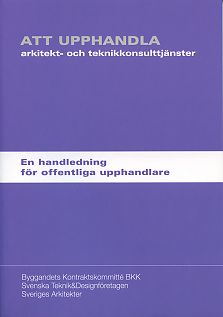Choosing architects for competitions - experiences from the selection of design teams in Sweden
DOI:
https://doi.org/10.7577/formakademisk.821Emneord (Nøkkelord):
prequalification, invitation, selection, architectural competition, organizerSammendrag
This article presents results from a study of prequalification in architectural competitions. The aim is to develop knowledge of how the organizer appoints candidates to restricted competitions in Sweden. Prequalification is a selection procedure used early in the competition process to identify suitable candidates for the following design phase. The overall research question in the study is about how organizers identify architects / design teams. The methodology includes an inventory of competitions, case studies, document review and interviews of key-persons. Ten municipal and governmental competitions have been examined in the study. The invitation emerges during negotiation at the organizing body. General conditions, submission requirements and criteria for the evaluation of applications by architect firms are part of an established practice. All clients have an assessment procedure made up of two distinct stages. First they check whether applications meet the specific "must requirements" in the invitation. Thereafter follows an evaluative assessment of the candidate's professional profile, which is based on the criteria in the invitation. Reference projects and information from the referees are important sources of information in this stage. Decisive in the final assessment is the organizer's perception of the candidates' ability to produce projects of architectural quality, the ability to combine creative solutions with functional requirements and aptitude to work with developers and contractors.

Nedlastinger
Publisert
Hvordan referere
Utgave
Seksjon
Lisens
- Forfatteren(e) beholder sin opphavs- og kopieringsrett til eget manuskript, men gir tidsskriftet varig rett til 1) å fremføre manuskriptet for offentligheten i den opprinnelig publiserte digitale form, og 2) å registreres og siteres som første publisering av manuskriptet.
- Forfatteren må selv forvalte sine økonomiske kopieringsrettigheter overfor eventuell tredjepart.
- Tidsskriftet gir ingen økonomisk eller annen kompensasjon for innsendte bidrag, medmindre det er gjort særskilt avtale om dette med forfatteren(e).
- Tidsskriftet plikter å arkivere manuskriptet (inklusive metadata) i den opprinnelig publiserte digitale form, i minst ett dertil egnet åpent tilgjengelig langtidsarkiv for digitalt materiell, som for eksempel i de norske universitetenes institusjonsarkiv innen rammen av NORA-samarbeidet.
Verket vil bli publisert OpenAccess med en Creative Commons 4.0-lisens som tillater alle å lese, dele og tilpasse innholdet, også kommersielt, under lisensvilkårene:
Dette verket må tilskrives/ krediteres på riktig måte, en lenke må gis til CC-BY 4.0-lisensen, og endringer som er gjort må angis på en rimelig måte, men ikke på noen måte som antyder at lisensgiveren støtter deg eller din bruk.



